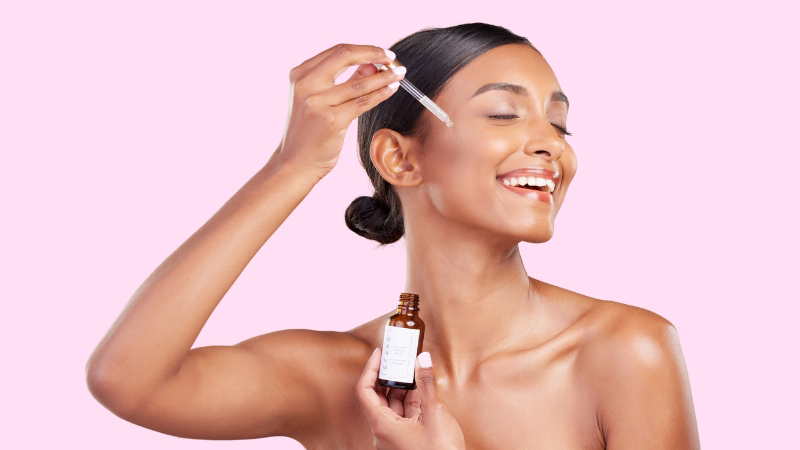Retinol has become one of the most talked-about ingredients in the world of skincare. It is widely praised for its anti-aging and skin-renewing properties, making it a favorite among dermatologists and beauty enthusiasts. However, while retinol offers impressive benefits, it is not without its risks. To make the most of this powerful ingredient, it is crucial to understand how it works, its advantages, potential side effects, and the best ways to use it.

What Is Retinol?
Retinol is a derivative of vitamin A, which is essential for healthy skin, vision, and immune function. In skincare, retinol belongs to the family of retinoids, which also includes prescription-strength versions like tretinoin. When applied to the skin, retinol promotes cell turnover, encourages collagen production, and helps improve overall skin texture.
The Benefits of Retinol
Fights Signs of Aging
One of the primary reasons people turn to retinol is its anti-aging properties. As we age, collagen production slows down, leading to fine lines, wrinkles, and sagging skin. Retinol stimulates collagen synthesis, which helps firm the skin and reduce the appearance of wrinkles.
Improves Skin Texture and Tone
In addition to smoothing wrinkles, retinol works wonders in improving skin texture and evening out skin tone. It can fade hyperpigmentation, sunspots, and discoloration caused by acne scars, leaving the skin looking more radiant and youthful.
Treats Acne and Prevents Breakouts
Retinol is effective in managing acne by unclogging pores and reducing inflammation. It helps to prevent breakouts by keeping the skin clear of dead cells and excess oil, making it an excellent choice for those with acne-prone skin.
Minimizes Pore Appearance
Large pores can make skin look uneven and rough. Since retinol increases cell turnover and boosts collagen, it helps tighten pores over time, leading to a smoother complexion.
Enhances Skin Hydration
Although retinol itself is not a hydrating ingredient, it aids in improving the skin’s ability to retain moisture by strengthening the skin barrier. This can lead to a plumper, healthier-looking complexion.
Potential Risks and Side Effects
Despite its benefits, retinol can have some drawbacks, especially for those with sensitive skin. It is important to be aware of potential risks before incorporating it into your routine.
Irritation and Dryness
Retinol can cause redness, dryness, and peeling, especially when first introduced. This is because it accelerates skin cell turnover, which can temporarily disrupt the skin’s barrier.
Increased Sun Sensitivity
One of the most significant downsides of retinol is that it makes the skin more sensitive to UV rays. This increases the risk of sunburn and long-term sun damage if proper sun protection is not used.
Not Suitable for Pregnant or Nursing Women
Retinol and other retinoids are not recommended for pregnant or breastfeeding women due to potential risks of birth defects and other health concerns.
Initial Breakouts (Retinization Phase)
When first using retinol, some individuals experience an increase in breakouts. This is commonly known as the “retinization phase,” where the skin purges impurities before improving.
Best Practices for Using Retinol
To enjoy the benefits of retinol while minimizing risks, it is essential to follow the best application practices. Here are some tips for incorporating retinol into your skincare routine effectively.
Start Slowly
Because retinol can be potent, it is advisable to start with a low concentration (0.1%–0.3%) and apply it only 2–3 times a week. Once your skin builds tolerance, you can increase usage gradually.
Use It at Night
Retinol breaks down when exposed to sunlight, reducing its effectiveness. For this reason, it is best applied at night as part of your evening skincare routine.
Always Apply Sunscreen
Since retinol increases sun sensitivity, wearing sunscreen (SPF 30 or higher) during the day is non-negotiable. This helps protect the skin from UV damage and prevents further pigmentation issues.
Pair with Moisturizer
To reduce irritation and dryness, always follow up with a good moisturizer. Some people even use the “sandwich method,” applying moisturizer before and after retinol to buffer its strength.
Avoid Combining with Harsh Ingredients
Retinol should not be mixed with exfoliating acids (like AHAs and BHAs) or vitamin C in the same routine, as this can cause excessive irritation. Instead, use these ingredients on alternate nights.
Be Patient
Results from retinol take time. While some people notice improvements within a few weeks, significant changes in wrinkles and skin texture may take 3–6 months. Consistency is key.
Conclusion
Retinol is undoubtedly a game-changer in skincare, offering numerous benefits such as anti-aging effects, acne treatment, and improved skin texture. However, it is essential to use it wisely to avoid potential risks like irritation, dryness, and sun sensitivity. By starting slowly, using sunscreen diligently, and following the right application techniques, you can make the most out of this powerhouse ingredient. With patience and proper care, retinol can help you achieve radiant, youthful-looking skin.
